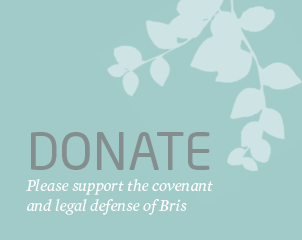
The most preferable instrument for ritual circumcision is called an ‘Izmel’, a well-polished razor sharp surgical knife. When using this instrument in accordance to Halacha—Jewish law— the actual circumcision is instantaneous and almost painless.
Some physicians and untrained Mohelim have taken to using a clamp method because it is easy to use and can be performed by a non-skilled individual. Unlike the razor-work of an Izmel, commonly-used clamps completely crush the skin, nerve endings and blood vessels in a lengthy procedure causing extreme pain and trauma to the child.
In Jewish law
Jewish law prohibits the use of a clamp for ritual circumcision, for two primary reasons: 1) Ritual. An essential part of the Bris ritual is ‘dam bris’ – blood of the covenant. The clamp tends to cause complete homeostasis as it crushes the skin. 2) Pain. The clamp causes much undue pain to the child, which is prohibited.
FDA warning on clamps
In 2000, the FDA issued a warning about circumcision clamps, which it said can cause laceration, hemorrhage, penile amputation, and urethral damage.
The circumcision debate
Medical experts continue to provide evidence of the medical benefits of circumcision such as a significantly lower risk for penile cancer and urinary tract infections.
However there are those that say that circumcision causes trauma to the child, which can cause him to withdraw into a state of neurogenic shock. This claim is used to outweigh the medical benefits that circumcision has to offer.
Reason for circumcision
The circumcision debate is valid insofar as the sole reason for circumcision is a medical one and the procedure for circumcision is done using the clamp method.
However, a Jewish person’s reason for performing circumcision is a ritual one (although there may be medical benefits as well) as a commandment by G-d and as a sign of G-d. Jewish law governs the procedural method of ritual circumcision, requiring a quick and almost painless method for the circumcision.
Many urologists and trained surgeons consider the traditional method of circumcision: “A simplified and expeditious method with excellent results and low complication”.

